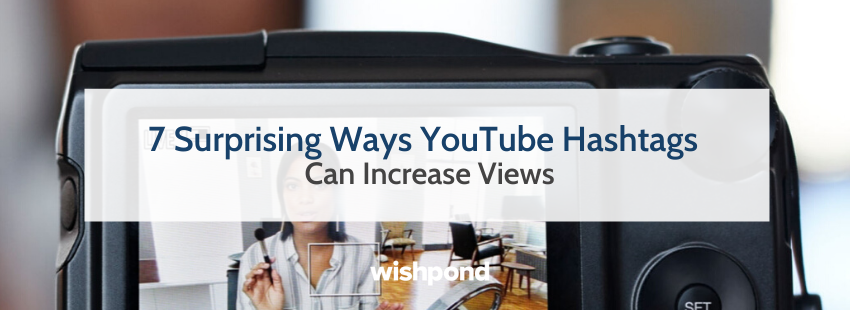Let’s talk about hashtags. This # symbol has been around for years. Still, it wasn’t until August 23, 2007, when Twitter’s creator decided to capitalize on the symbol to solidify themselves as “the” social media platform to use during the time.
Now you can’t see a post without it, social media platforms like Facebook, Twitter, Instagram, and now YouTube is dependent on hashtags to increase exposure and grab your target audience’s attention amidst the seas of content.
Youtube allows you to add hashtags to your video title and descriptions to improve a video’s discoverability on YouTube. The tip that no one tells you is that there’s a lot more that goes into using hashtags on Youtube than people let on.
So let’s change that, today I’m going to show you seven surprising ways YouTube hashtags can increase views and more!
1. How to Find YouTube Hashtags
Hashtags act as keywords or little discovery tags that allow people to find your video instantly. Like any effective hashtag or YouTube SEO process, it begins with video keyword research.
What’s the difference between regular keywords and video keywords or YouTube tags you’ll be using for your videos?
They are pretty similar in the fact that they both allow Google and people to understand what your video or article is about. The only difference is that keywords used in articles, ads, and videos can vary in keyword volume, location, and popularity.
For example, if you search for the keyword fitness on google you’ll see the following search results, courtesy of Ahrefs:

But it’s completely different when you search for the same keyword on YouTube:

Popular hashtags will always be popular, that’s a fact, and if a keyword/hashtag is popular, it makes it harder for your content to rank.
Videos that don’t make the first search page of YouTube rarely get seen. Having your video rank in the top ten should be your priority, so find a specific hashtag or a keyword that your content can rank highly on. You’ll need to do some research.
Here are some tools you can use for hashtag or keywords you can use in your next video:
Ahrefs

Google Adwords Keyword Planner

Moz Keyword Tool
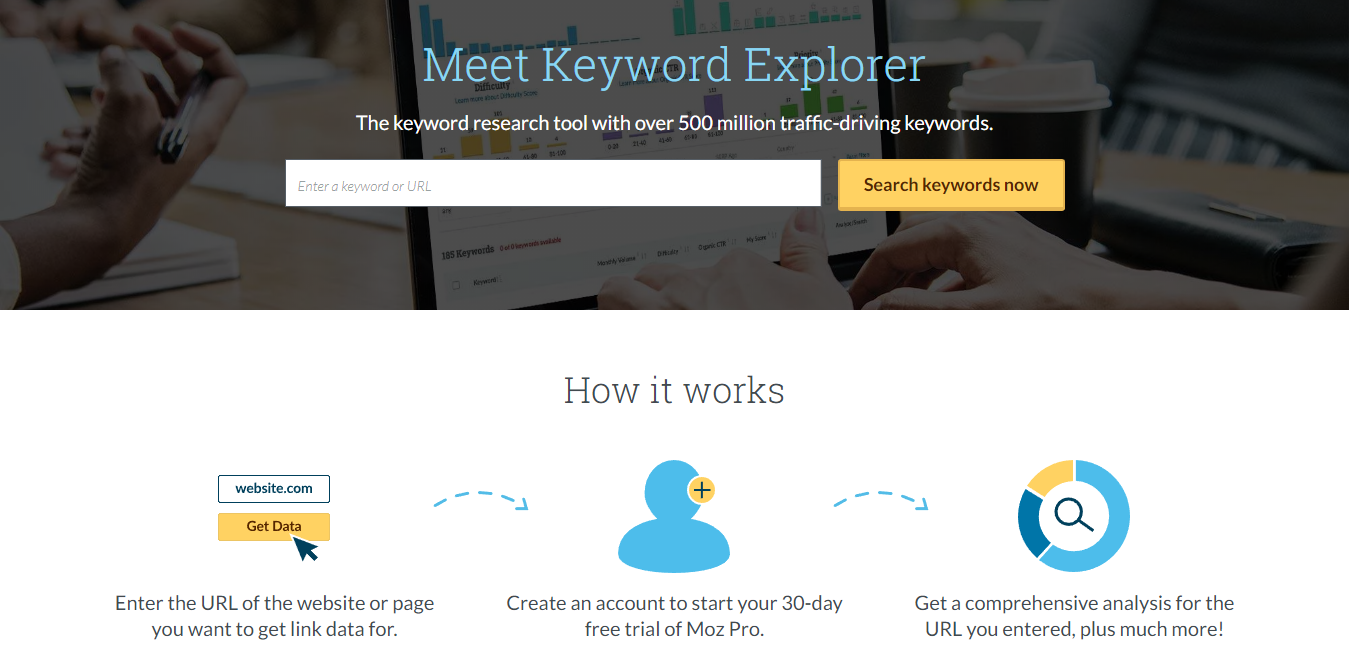
2. Use Hashtags Related to Your Topic
Now that we know to find keywords, it’s time for you to search for hashtags that are actually relevant to your video.
I know it can be tempting only to add popular hashtags to your YouTube description, but you have to think smart.
You have to use hashtags that are relevant to your video.
If you add popular hashtags for the sake of ranking, you might end up attracting people who expect to view a different type of content than what your video has to offer.
This can shorten your watch hours and turn away people from subscribing.
Not to mention if the hashtags you use aren’t relevant to the topic, your video can come off as spam or irrelevant.
YouTube only rewards videos that are relevant to the viewer’s search property on the first search page.
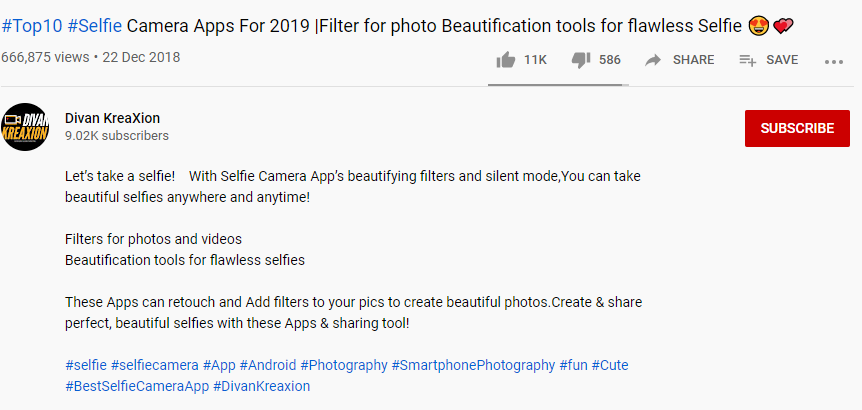
To find the relevant hashtags for your YouTube channel, start by creating a Seed Keywords List.
Seed Keywords are terms that describe broad topics in a specific niche or category.
For example, if you’re a YouTuber that specializes in social media marketing, your Seed Keywords could be:
Seed Keyword: Social Media Management Tools
Your potential YouTube video could have the following hashtags (but are not limited to):
- Social Media Management Tools
- Social Media Apps for Marketing 2020
- SMM Apps
3. Use Hashtags Based on Your Location
On Instagram, you can add geotag so that viewers can see your location.
If you’re a lifestyle or travel blogger or someone who does reviews on places, adding a location hashtag to your YouTube video can help to increase your video views as they search for other opinions related to that location.
You can add locations such as cities, countries, or brick and mortar stores.
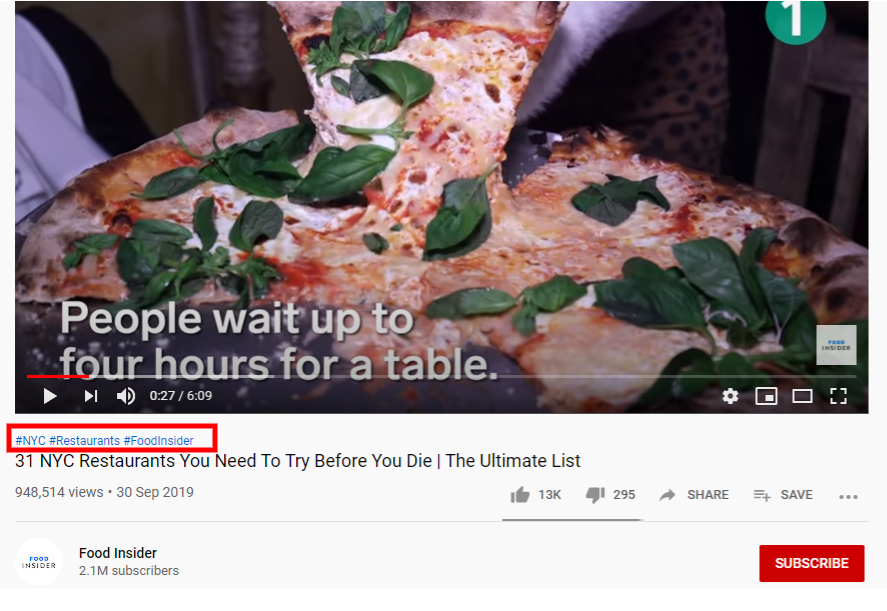
4. Use Branded Hashtags in Your Videos
A branded hashtag is a hashtag that is used to identify and find a brand’s content easily. This can be your brand name, a phrase, or slogan.
For example, Nike has #justdoit, while Spotify has #spotify. The two most important aspects of well-branded hashtags are:
- They’re short or easy to type
- They’re only associated with your brand (by everyone, not just you.)
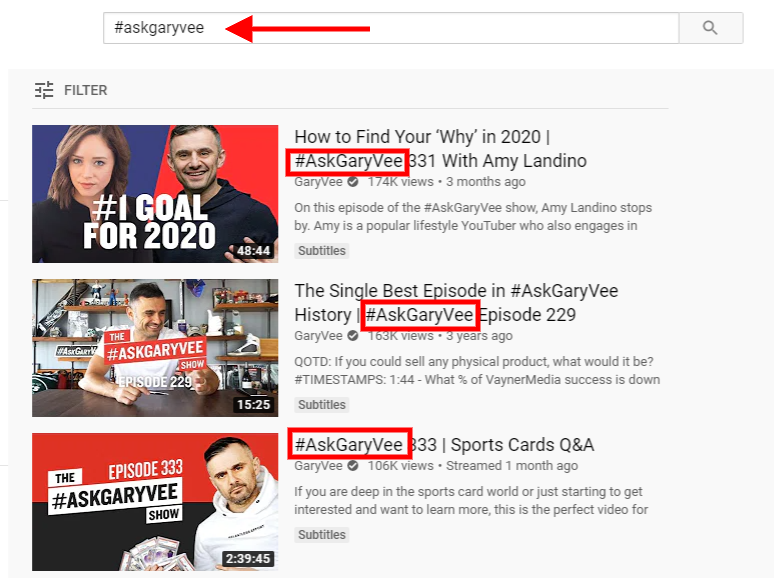
Start using your branded hashtag on all your social media platforms to increase the search volume and help viewers or followers to find you easily no matter what platform they are on.
5. Do a Review on Your Top Videos Hashtags
If you notice a video you uploaded is doing very well, then take a look at the topic and the key hashtag that you used for that video.
YouTubers tend to be very quick to make videos on the latest trends and topics, which is not a bad thing, but it’s not always sustainable.
Instead, look for the topics that seem to be doing very well and find related keywords or topics and branch out.
For instance, if you’re a lifestyle vlogger and you find that your viewers love hearing your shared stories, create more videos related to that topic and use popular storytime hashtags for easy search.
Likewise, if you’re a company and you find that people watch more FAQ videos than product videos, then make more FAQ videos and use the hashtags to boot.
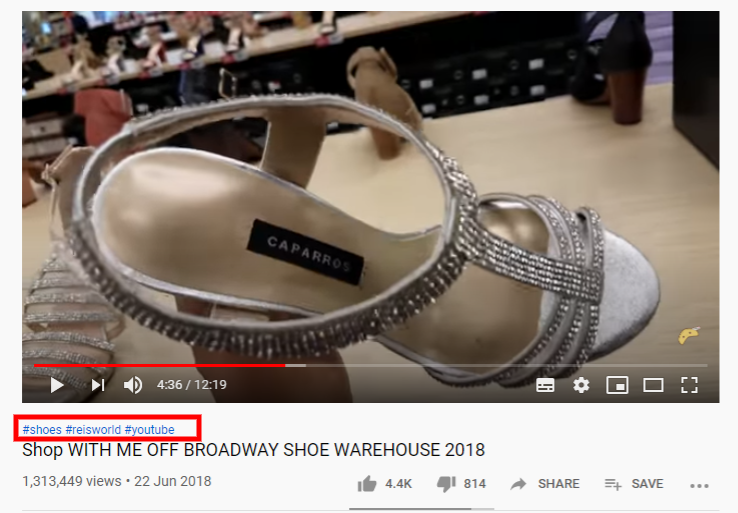
6. Be Aware That Hashtags on YouTube Have Downsides
Apart from finding hashtags that have high search volume, always make sure to do your research on what type of content is associated with the hashtag you’re using. Not all popular hashtags are related to good things.
Type the hashtag on YouTube and see what type of content YouTubers are making with it. If it’s positive, add it to your next video, if it’s negative, throw it out the door.
There’s no way your one-off video is going to change the viewers’ perception when there are thousands of videos that say otherwise.
Then, use those same hashtags on your video.
7. Keep Your Eye on Competitor’s Hashtag Strategy
Like every good SEO strategy knowing what your competitors are using can give you a good idea of what other hashtags should be on your radar. Take a look at their top videos and channel, as well as other social media platforms.

If you’re trying to create a ranking video, don’t just consider the hashtags but the content itself. Match it or make something more significant because as great as hashtags are, you can have the right hashtags on your videos but still have sucky content.
Summary
YouTube marketing is far more diverse than most marketers let on, and hashtags are only the beginning of it all.
No one gains over 1000 subscribers on YouTube overnight, unless you have a massive ad budget, it takes work and dedication to see solid growth.
Yes, we do have those rare gems of YouTubers who go viral overnight, but that’s the 1% of the YouTube population.
For the other 99%, we have to practice good YouTube practices such as checking analytics, strategy, hashtags, and consistent uploads.
To help, I’ve dropped a few YouTube Guides below to help you not only master SEO but all aspects of your YouTube marketing to grow your subscribers:
- 18 Powerful Ways to Grow Your YouTube Channel
- 12 SEO Grow Hacks to Grow Your YouTube Channel
- 12 Youtube Analytics Every YouTuber Should Know
- 9 Surprising Ways You Can Use YouTube for Influencer Marketing
- 33 Instagram Story Hacks You Wish You Knew Sooner
Need help with your next contest ?
Book a free call to learn how our team of marketing experts can help you create high converting marketing campaigns today.

